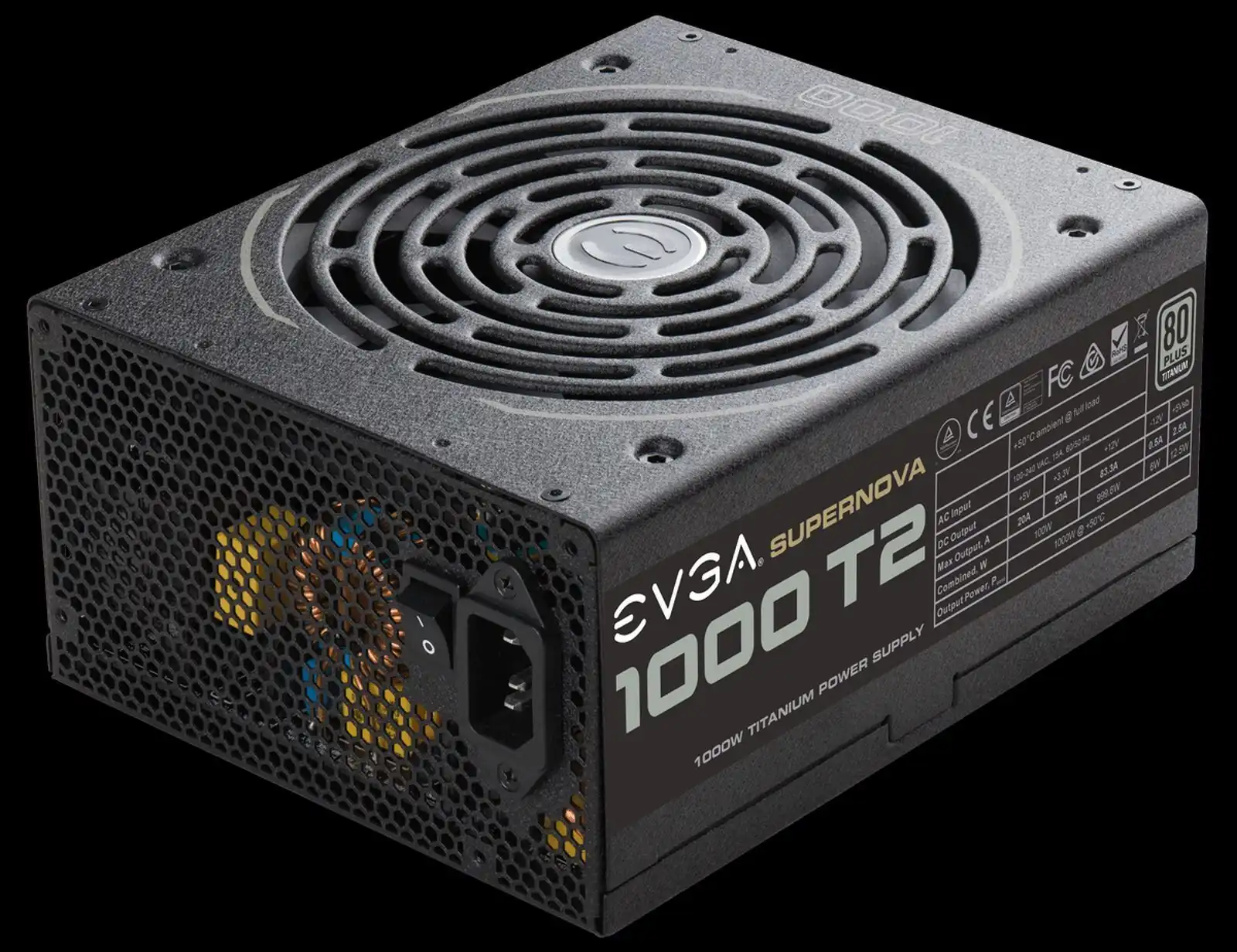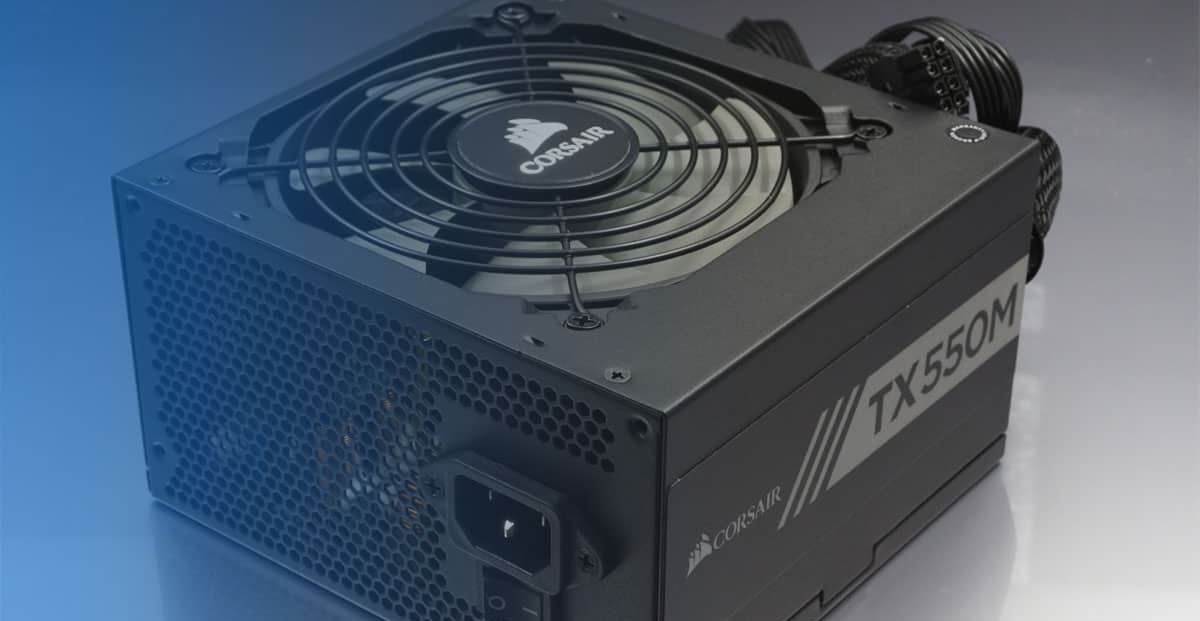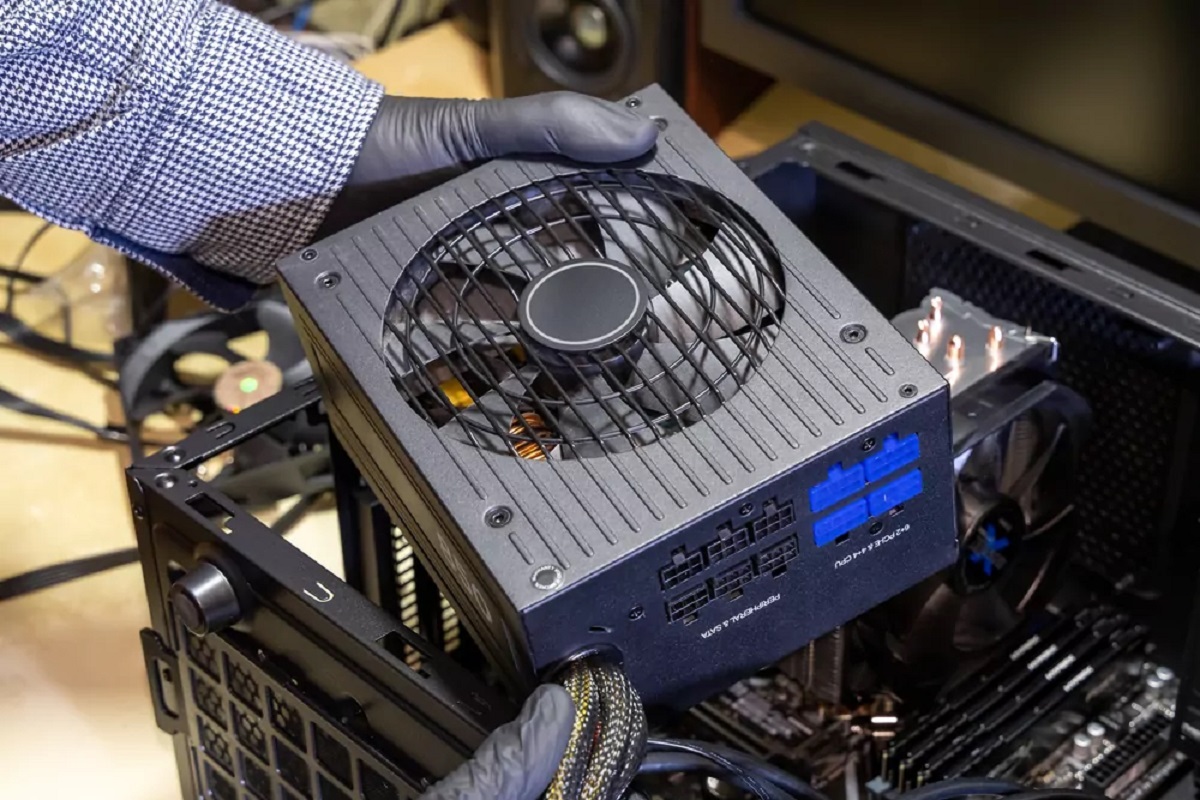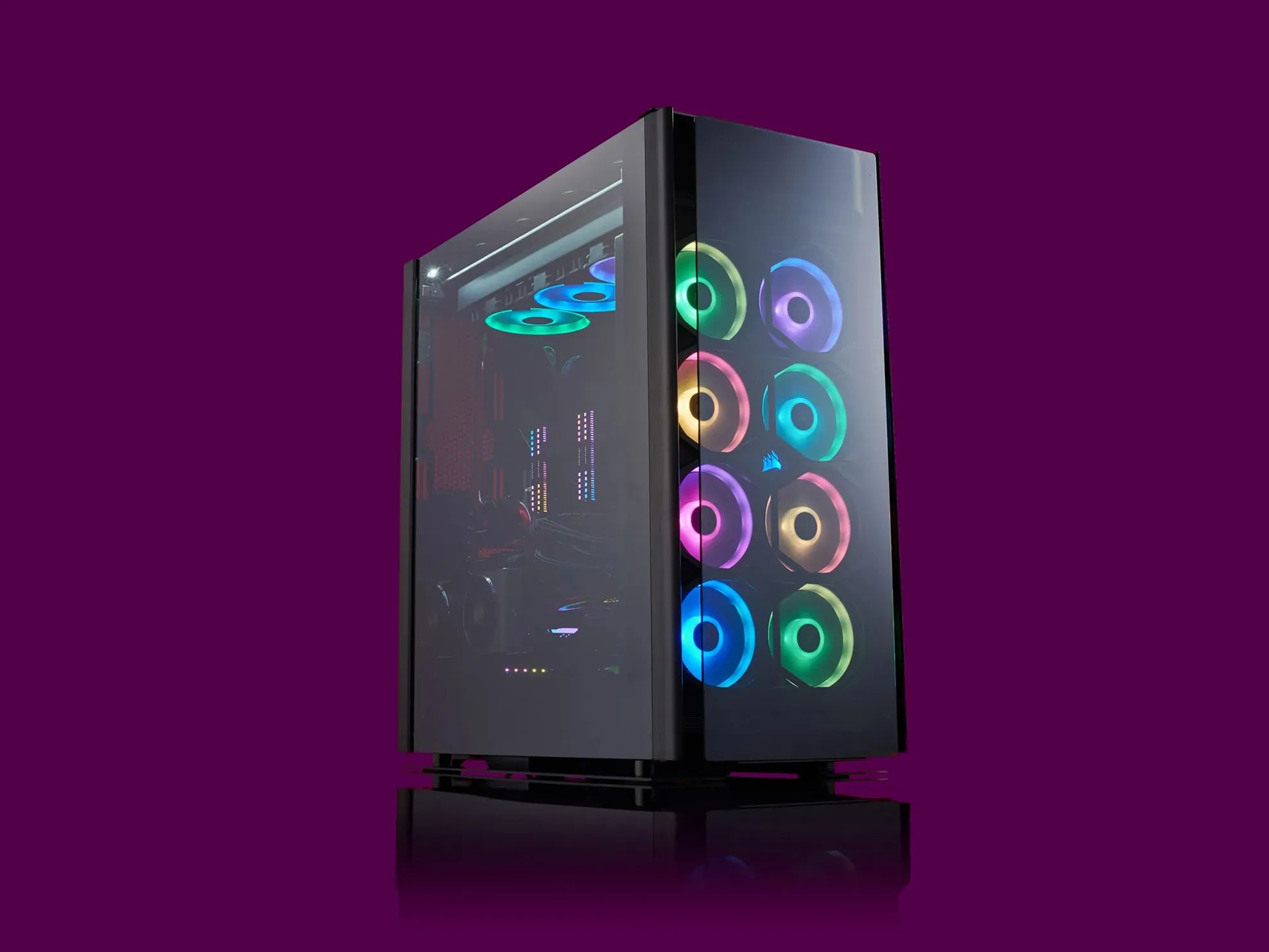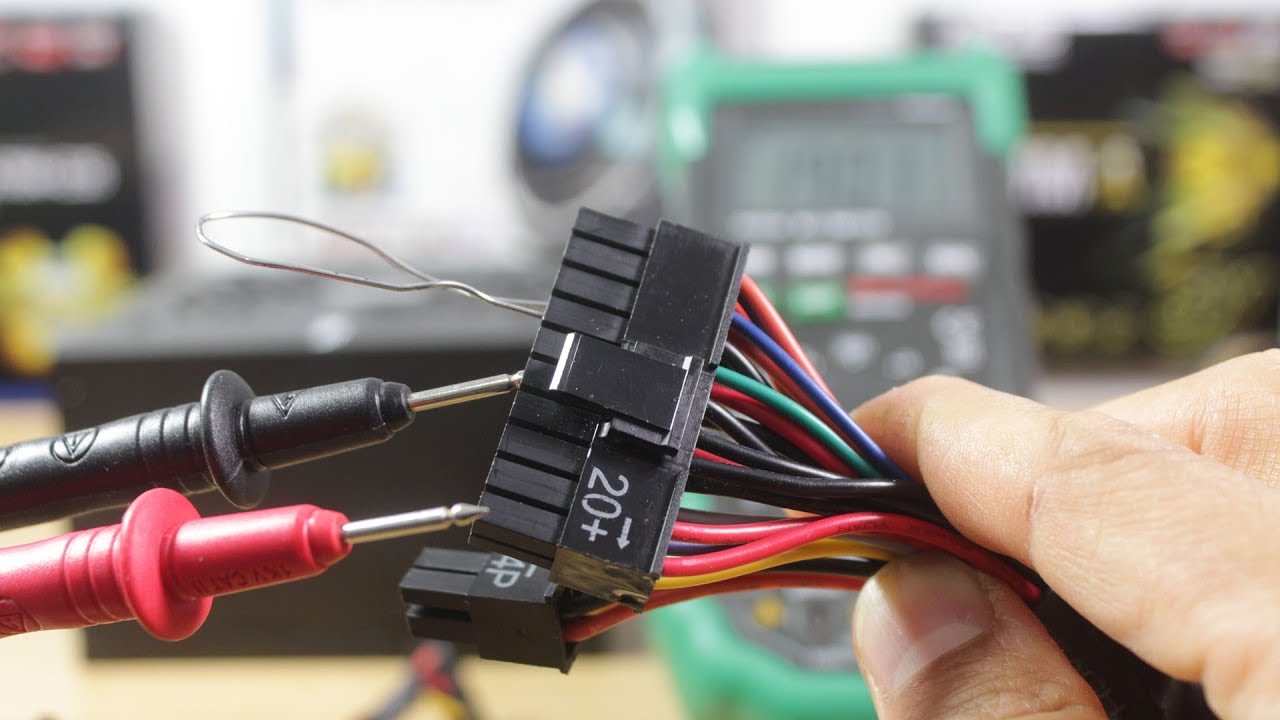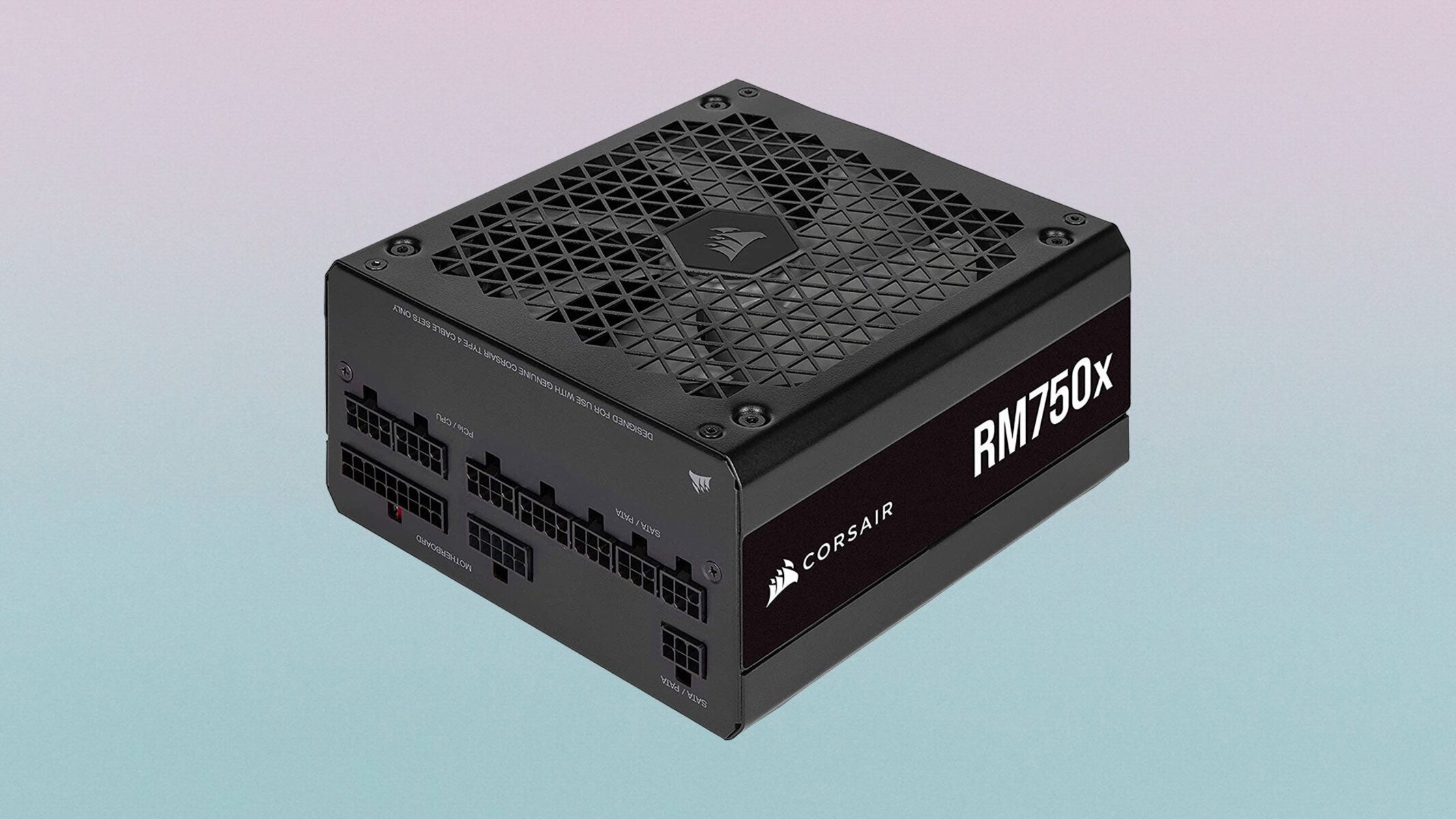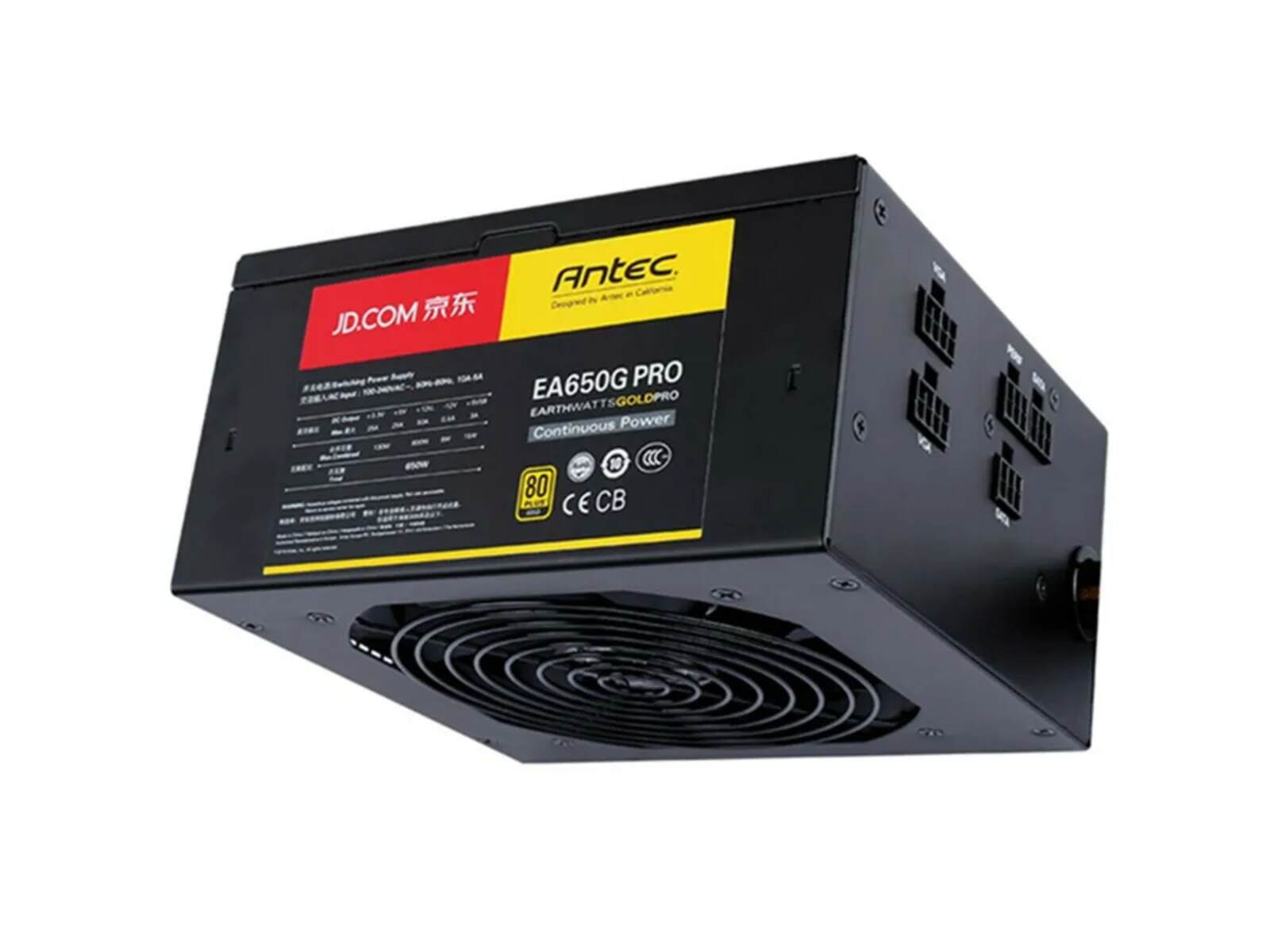Introduction
When it comes to building or upgrading a PC, one component that often gets overlooked but is crucial for its proper functioning is the power supply unit (PSU). The PSU is responsible for supplying power to all the other components in your PC, and choosing the right one is essential to ensure stable and efficient operation.
A reliable and suitable power supply unit is vital as it determines the overall performance and longevity of your PC. Selecting an inadequate PSU can lead to unstable power delivery, system crashes, and even damage to your valuable components. On the other hand, an overpowered PSU can result in wastage of energy and higher electricity bills.
With the wide range of power supply options available in the market, it can be overwhelming to determine which one is best suited for your needs. This article will guide you through the considerations and factors to keep in mind when choosing a power supply unit for your PC, ensuring that you make an informed decision.
From the wattage requirements and efficiency ratings to form factors, modular options, noise levels, and compatibility, we will explore every aspect to help you understand how to choose the right power supply unit for your PC. So, whether you are a seasoned PC builder or a newbie, this article will serve as a comprehensive guide to demystify the world of power supply units and enable you to make an educated choice.
Why is the power supply unit important?
The power supply unit (PSU) is a critical component of any computer system. Its primary function is to convert the available electrical power from the wall outlet into the appropriate voltage and current levels required by the various internal components of the PC. Without a reliable and efficient power supply, your computer would not be able to function properly, if at all.
One of the main reasons why the power supply unit is important is its role in preventing damage to other components. A good PSU will regulate the voltage and current to provide stable and clean power to your PC’s components. It will protect them from power surges, voltage fluctuations, and other electrical issues that can cause irreparable damage. Inadequate or faulty power supply units can lead to system crashes, data loss, and even component failures.
Another crucial aspect is power delivery. Different components in your PC require different amounts of power. The PSU must be able to supply sufficient power to meet the demands of all the components, including the CPU, graphics card, hard drives, and peripherals. Insufficient power can result in poor performance, system instability, and even random shutdowns.
Furthermore, the power supply unit plays a crucial role in energy efficiency and cost savings. A high-quality PSU with a good efficiency rating can convert power from the wall outlet into usable electricity more efficiently. This means less power is wasted as heat, resulting in lower electricity bills and a smaller environmental footprint. Additionally, efficient PSUs generate less heat, reducing the need for excessive cooling and making your PC quieter and more comfortable to use.
Overall, the power supply unit is a vital component that ensures the stability, longevity, and performance of your PC. Investing in a high-quality PSU is essential to protect your other components, provide reliable power delivery, and achieve energy efficiency. By choosing the right power supply unit, you can enhance the overall experience of using your computer and ensure that it operates optimally for years to come.
Factors to consider when choosing a power supply unit
Choosing the right power supply unit (PSU) for your PC involves considering several important factors. Here are the key factors to keep in mind when selecting a PSU:
- Wattage requirements: The wattage requirement of your PSU depends on the power consumption of your components. Make sure to calculate the total power consumption of your PC, including the CPU, graphics card, hard drives, and any other peripherals. It is recommended to choose a PSU with a wattage that exceeds your calculated requirement to allow for future upgrades and system expansion.
- Efficiency rating: The efficiency rating of a PSU indicates how effectively it converts power from the wall outlet into usable electricity. Look for PSUs with a high efficiency rating, such as 80 Plus Bronze, Silver, Gold, or Platinum. Higher efficiency ratings mean lower energy wastage, lower heat production, and cost savings on your electricity bill.
- Form factor and size: Ensure that the PSU you choose is compatible with your PC’s case and motherboard. The most common form factors are ATX, Micro ATX, and Mini ITX. Check the dimensions of the PSU and the available space in your case to ensure a proper fit.
- Modular or non-modular: Modular PSUs allow you to connect only the cables you need, reducing cable clutter inside your PC and improving airflow. Non-modular PSUs come with a fixed set of cables. Choose according to your preference and the level of cable management you desire.
- Connectors and cables: Ensure that the PSU has sufficient connectors and cables to accommodate all your components. Check for the required connections for your motherboard, graphics card, storage devices, and peripherals. It is also beneficial to have extra connectors for future upgrades.
- Compatibility: Consider the compatibility between your PSU and other components, such as the motherboard, graphics card, and CPU. Some high-end graphics cards may require specific power connectors, so make sure your chosen PSU can support them.
- Noise levels and cooling: Look for PSUs with quiet cooling systems and features such as fanless operation or low-noise fans. This will help keep your PC’s noise levels down and ensure effective cooling without causing excessive heat buildup.
By considering these factors, you can narrow down your options and choose a power supply unit that meets your specific requirements and provides reliable power delivery to your PC’s components. It is important to invest in a high-quality PSU that will ensure the stability, performance, and longevity of your system.
Wattage requirements for your PC
Determining the wattage requirements for your PC is an essential step in choosing the right power supply unit (PSU). The wattage requirement refers to the amount of power your components consume, and a PSU with insufficient wattage can lead to instability and system crashes. Here are some steps to help you calculate the wattage requirements for your PC:
- Identify your components: Make a list of all the components in your PC that require power, including the CPU, graphics card, motherboard, hard drives, SSDs, RAM, and any additional peripherals such as fans or RGB lighting.
- Find the power consumption: Look up the power consumption specifications for each component. Typically, manufacturers provide this information in the product’s specifications or user manual. Note down the power consumption values in watts for each component.
- Add up the power consumption: Add up the power consumption values of all the components. This will give you the total wattage required by your PC under full load.
- Consider future upgrades: It is advisable to choose a PSU with a wattage that exceeds your current calculation. This allows for any future upgrades or additions to your system. Additionally, having some headroom ensures that your PSU is not running at maximum capacity, leading to better efficiency and longevity.
Once you have calculated the total wattage requirement for your PC, you can begin searching for a PSU that meets or exceeds that value. It is important not to skimp on the wattage, especially if you have power-hungry components such as high-performance CPUs or powerful graphics cards.
Keep in mind that different scenarios may have different power requirements. For example, if you plan to overclock your components or run demanding tasks like video editing or gaming, you may need a PSU with higher wattage to provide sufficient power.
Lastly, it is worth noting that some PSUs come with features like adjustable fan speed or hybrid mode, which can help optimize power consumption based on the actual load. These features can improve energy efficiency and reduce noise levels, making them worth considering if they align with your requirements.
By accurately determining the wattage requirements for your PC, you can select a suitable PSU that ensures stable and reliable power delivery to all your components. This will help keep your system running smoothly and protect your valuable hardware from potential damage caused by insufficient power supply.
Efficiency rating of power supply units
The efficiency rating of a power supply unit (PSU) is an important consideration when choosing the right PSU for your PC. It indicates how effectively the PSU can convert the incoming electrical power from the wall outlet into usable power for your computer’s components. When a PSU has a higher efficiency rating, it means that it wastes less energy and operates more efficiently.
PSU efficiency ratings are commonly denoted by the 80 Plus certification, which is a program that tests and certifies the efficiency of PSUs. The 80 Plus rating is divided into different levels: Bronze, Silver, Gold, Platinum, and Titanium. Each level represents increasing energy efficiency, with Titanium being the highest.
Why is the efficiency rating of a PSU important? There are a few key reasons:
- Energy savings: A more efficient PSU results in less energy wasted as heat, which means lower electricity bills over time. While the difference in energy savings may seem small at first, it can add up significantly over the lifespan of your PC, especially if it is running for long periods or used for energy-intensive tasks.
- Environmental impact: Using a more efficient PSU reduces the overall energy consumption of your PC. This not only benefits your wallet but also helps minimize your carbon footprint and contribute to a more sustainable environment.
- Heat and noise: Efficient PSUs generate less heat due to reduced energy wastage. This means that the cooling system of your PC doesn’t have to work as hard to dissipate excess heat. As a result, your computer will run cooler, and the fans can operate at lower speeds, resulting in reduced noise levels and a more comfortable computing experience.
- Reliability and longevity: Efficient PSUs typically use high-quality components and undergo rigorous testing to obtain their certification. This reliability ensures stable power delivery to your components, reducing the risk of system crashes, data loss, and component damage. A quality PSU with a higher efficiency rating can also have a longer lifespan.
When considering the efficiency rating of a PSU, it’s important to note that higher efficiency usually comes with a higher price tag. However, investing in a PSU with a higher efficiency rating can lead to long-term cost savings, improved environmental impact, and a more reliable and quieter system.
Ultimately, the efficiency rating of a power supply unit is a vital factor to consider when making your purchasing decision. By selecting a PSU with a higher efficiency rating, you can benefit from energy savings, reduced heat and noise levels, enhanced system reliability, and a greener computing experience.
Form factor and size considerations
When choosing a power supply unit (PSU) for your PC, considering the form factor and size of the PSU is crucial. Form factor refers to the standardized dimensions and shape of the PSU, while size refers to its physical dimensions. Getting the right form factor and size ensures compatibility with your PC case, motherboard, and other components. Here are some key factors to consider:
- ATX form factor: The most common form factor for PSUs is the ATX (Advanced Technology eXtended) form factor. It is widely used and compatible with the majority of PC cases and motherboards. ATX PSUs generally have a length of around 150mm and a width of 86mm, with variations in depth.
- Micro ATX and Mini ITX form factors: For smaller PCs or compact builds, you may require a PSU with a smaller form factor. Micro ATX and Mini ITX are smaller variants of the ATX form factor. Micro ATX PSUs have a shorter length of around 125mm, while Mini ITX PSUs are even smaller, usually around 100mm in length. These form factors are designed specifically for smaller cases and motherboards.
- Case compatibility: Ensure that the PSU form factor matches the corresponding form factor of your PC case. Most cases are designed to accommodate ATX PSUs, but if you have a Micro ATX or Mini ITX case, make sure to choose a PSU that fits accordingly. It’s important to check the dimensions of both the case and PSU to ensure a proper fit.
- Internal space: In addition to form factor compatibility, consider the available internal space in your PC case. Some cases may have limitations on the length or depth of the PSU that can be installed. Ensure that the PSU you choose leaves enough space for other components, proper airflow, and cable management.
- Modular or non-modular: Consider whether you prefer a modular or non-modular PSU. Modular PSUs come with detachable cables, allowing you to connect only the cables needed for your system. This reduces cable clutter and helps with better cable management. Non-modular PSUs have fixed cables, which may be more suitable for smaller cases with limited space.
Before purchasing a PSU, it is advisable to consult the specifications and compatibility information provided by the PSU manufacturer and the case manufacturer. This will ensure that you choose a PSU that fits properly and aligns with the specific requirements of your PC build.
Selecting the right form factor and size of the PSU is essential for a seamless and trouble-free building experience. It guarantees compatibility, efficient airflow, and proper cable management, contributing to the overall performance and aesthetics of your PC. Take the time to measure and research the dimensions and requirements of your case and components, and make an informed decision based on your specific needs.
Modular or non-modular power supply unit
One of the decisions you’ll need to make when choosing a power supply unit (PSU) for your PC is whether to go with a modular or non-modular design. Both options have their advantages and trade-offs, so let’s explore the differences between them to help you make an informed decision.
A modular PSU is designed with detachable cables that allow you to connect only the necessary cables to your components. This means you can eliminate any unused cables, reducing cable clutter inside your PC case. This not only enhances the overall aesthetics but also improves airflow, as there are fewer cables obstructing the path of airflow. Additionally, a modular PSU simplifies cable management, making it easier to organize and route cables neatly.
On the other hand, a non-modular PSU comes with a fixed set of cables that are permanently attached to the unit. This can result in more cables inside your PC case, leading to increased clutter and potentially impacting airflow. However, non-modular PSUs are often more cost-effective compared to modular options, making them a budget-friendly choice.
When deciding between a modular or non-modular PSU, consider the following factors:
- Cable management: If you prioritize a clean and organized system with minimal cable clutter, a modular PSU is the way to go. It allows you to only install the necessary cables, making cable management easier and improving overall airflow.
- Flexibility and future upgrades: Modular PSUs offer the advantage of flexibility. You can easily swap or add cables as needed, accommodating future upgrades or changes in your PC system. This can be especially beneficial if you plan on adding more components or upgrading your hardware in the future.
- Budget considerations: Non-modular PSUs tend to be more affordable compared to their modular counterparts. If budget is a concern and cable management is not a priority, a non-modular PSU can be a cost-effective choice without compromising performance.
- Build experience and aesthetics: If you enjoy a clean and visually appealing PC build, a modular PSU can help you achieve that desired look. The ability to customize cable routing and eliminate unused cables can create an organized and sleek appearance.
Ultimately, the choice between a modular or non-modular PSU depends on your specific needs, budget, and build preferences. Consider your cable management goals, future upgrade possibilities, and overall build aesthetics when making this decision. Both options can provide reliable power delivery, so weigh the advantages and trade-offs to determine which PSU type is best suited for your PC build.
Connecting the power supply unit to your PC
Once you have chosen the right power supply unit (PSU) for your PC, the next step is to correctly connect it to your components. Properly connecting the PSU ensures that your PC receives the necessary power to function optimally. Here is a step-by-step guide on how to connect the PSU to your PC:
- Ensure safety: Before starting, make sure your PC is powered off and disconnected from the electrical outlet. This is crucial to prevent any accidental electric shocks or damage to your components.
- Locate the PSU: Identify where the PSU is located in your PC case. It is typically found at the bottom of the case, mounted either at the top or bottom. Ensure that it is securely installed and properly aligned.
- Connect the motherboard: Locate the main ATX power connector. It is a rectangular 20+4 pin connector that provides power to the motherboard. Align the connector with the corresponding socket on the motherboard, ensuring that the orientation is correct, and firmly push it in until it clicks into place.
- Connect the CPU power: Locate the CPU power connector. It is typically a 4+4 or 8-pin connector located near the CPU socket on the motherboard. Align the connector with the socket, and insert it firmly until it locks into place. This provides power to the CPU.
- Connect the graphics card: For systems with a dedicated graphics card, locate the PCIe power connectors. These connectors vary depending on the graphics card and can be 6-pin or 8-pin. Align the connectors with the corresponding sockets on the graphics card, and firmly push them in until they click into place.
- Connect the storage and peripherals: Depending on your system, you may need to connect additional power cables to your storage drives (like HDDs or SSDs) and peripherals such as fans or RGB lighting. Locate the appropriate connectors and connect them securely to the respective devices.
- Check all connections: Once all the connections are made, go through each one and ensure they are securely fastened. Check that the cables are not loose or disconnected.
- Cable management: Organize the PSU cables neatly using cable management options provided by your PC case, such as routing them behind the motherboard tray or using cable ties. This helps improve airflow and overall aesthetics.
- Power on and test: Once everything is connected and organized, double-check all connections, close the PC case, and plug it back into the electrical outlet. Power on your PC and test it to ensure that all components receive power and are functioning correctly.
It’s important to follow these steps carefully and refer to the documentation provided with your PSU and motherboard. Each PC build can have slight variations in terms of connector types and locations, so consult the user manuals for any specific instructions.
By correctly connecting the power supply unit to your PC, you ensure that all components receive the necessary power to operate reliably. This step is crucial for the overall stability and performance of your system.
Compatibility with other PC components
When selecting a power supply unit (PSU) for your PC, ensuring compatibility with your other components is vital. Compatibility issues could lead to improper power delivery, component damage, or system instability. Here are the key components to consider when checking PSU compatibility:
- Motherboard compatibility: Check the PSU’s compatibility with your motherboard’s form factor, such as ATX, Micro ATX, or Mini ITX. Also, verify if the PSU has the necessary power connectors, such as the main 24-pin ATX connector and auxiliary CPU power connectors.
- Graphics card compatibility: Graphics cards often require dedicated power connectors, such as 6-pin or 8-pin PCIe connectors. Ensure that the PSU has the required number and type of connectors to power your graphics card. High-end graphics cards may require multiple connectors or even extra power delivery options like 8-pin and 6-pin connectors.
- CPU compatibility: Some high-powered CPUs, especially those used in gaming or workstation builds, may require additional power. Check if the PSU has the necessary power connectors, such as the 4+4 or 8-pin CPU power connectors, to supply power to your CPU adequately.
- Storage drive compatibility: Verify the PSU’s connectivity options for your storage drives. Most PSUs come with SATA power connectors for SATA-based HDDs and SSDs. If you have older components requiring Molex connectors, make sure the PSU has them as well.
- Peripheral compatibility: Consider any additional peripherals that require power, such as fans, RGB lighting, or liquid cooling pumps. Ensure that the PSU has enough connectors and wattage to support these components.
- Power requirements: Check the power consumption specifications of your components and compare them to the wattage output of the PSU. It is recommended to choose a PSU with a wattage that exceeds the total power requirements of your components, allowing for future upgrades and system expansion.
- Efficiency rating: While not directly related to compatibility, consider the efficiency rating of the PSU. A higher efficiency PSU will result in less energy wastage, lower heat production, and potential cost savings over time.
Ensure you consult the specifications and compatibility information provided by the PSU manufacturer as well as the documentation of your other PC components. This will help ensure a seamless and compatible integration of the PSU with the rest of your PC system.
By selecting a PSU that is compatible with your other components, you can avoid problems such as power delivery issues, incompatible connectors, and system instability. Taking the time to verify compatibility ensures a smooth and reliable operation of your PC system.
Noise levels and cooling
When choosing a power supply unit (PSU) for your PC, it’s important to consider noise levels and cooling performance. PSU noise and cooling directly impact the overall comfort, stability, and longevity of your PC system. Here are some key factors to keep in mind:
- Fan quality and noise: PSU fans are responsible for cooling the unit and dissipating heat. Higher-quality fans tend to generate less noise while providing sufficient airflow for cooling. Look for PSUs with high-quality, quiet fans that offer effective cooling without excessive noise.
- Modular or non-modular: Modular PSUs can help with cable management, allowing better airflow inside the case. Improved airflow reduces heat accumulation, leading to lower fan speed and overall noise levels. Non-modular PSUs tend to have more cables, potentially obstructing airflow and resulting in higher operating temperatures and noise.
- Fan control options: Some PSUs feature fan control options like adjustable fan speed or hybrid mode, which can help optimize cooling performance and noise levels based on system conditions. These features allow the PSU to run quieter when the system is under less load, resulting in a quieter overall experience.
- Efficiency and heat: More efficient PSUs tend to generate less heat due to reduced energy wastage. Lower heat production means that the cooling system, including PSU fans, doesn’t have to work as hard, resulting in quieter operation. Look for PSUs with higher efficiency ratings, such as 80 Plus Gold or higher, to minimize heat output.
- Case airflow: Proper airflow within the PC case is crucial for overall cooling performance and noise reduction. Ensure that your case has sufficient intake and exhaust fans to maintain a steady flow of cool air and expel hot air effectively. Efficient PSU cooling contributes to better overall case airflow.
- Consider silent PSU solutions: If ultra-quiet operation is a top priority, some manufacturers offer power supplies specifically designed for silent operation. These PSUs include features like specialized fan designs, noise-absorbing materials, or fanless operation to eliminate fan noise altogether.
To make an informed decision, consult product reviews, user experiences, and decibel ratings provided by PSU manufacturers. Keep in mind that noise perception can vary among individuals, so consider your personal preferences and tolerance level for noise.
By selecting a PSU with adequate cooling performance and noise levels, you can achieve better system stability, comfort, and longevity. A well-cooled PSU contributes to the overall performance and maintains a quiet computing experience.
Conclusion
Choosing the right power supply unit (PSU) for your PC is critical for its proper functioning and longevity. By considering factors such as wattage requirements, efficiency rating, form factor, modular or non-modular design, compatibility, noise levels, and cooling performance, you can make an informed decision that meets your specific needs.
Accurately assessing your PC’s wattage requirements ensures that you select a PSU with sufficient power to support your components and potential future upgrades. Opting for a PSU with a higher efficiency rating not only saves energy and reduces running costs but also aids in reducing heat generation and noise levels. Considering the form factor and size compatibility with your case, motherboard, and other components ensures a seamless integration.
The choice between a modular or non-modular PSU depends on your cable management preferences, build aesthetics, and budget. Modular PSUs offer flexibility, improved cable management, and enhanced airflow while non-modular PSUs can be cost-effective for budget-conscious builds.
During installation, ensure proper connections between the PSU and your components, considering compatibility with the motherboard, graphics card, CPU, storage drives, and peripherals. Be mindful of optimal cable management to promote efficient airflow and a clean aesthetic.
Lastly, taking noise levels and cooling performance into account contributes to a comfortable and stable computing experience. By choosing a PSU with quiet fan operation, optimal cooling features, and efficient heat dissipation, you can achieve better system stability, noise reduction, and overall performance.
In summary, selecting the right power supply unit for your PC is essential for ensuring reliable and efficient power delivery to your components. By carefully considering the factors outlined in this guide, you can make a well-informed decision that meets your specific needs and ensures a seamless and enjoyable PC building or upgrading experience.







